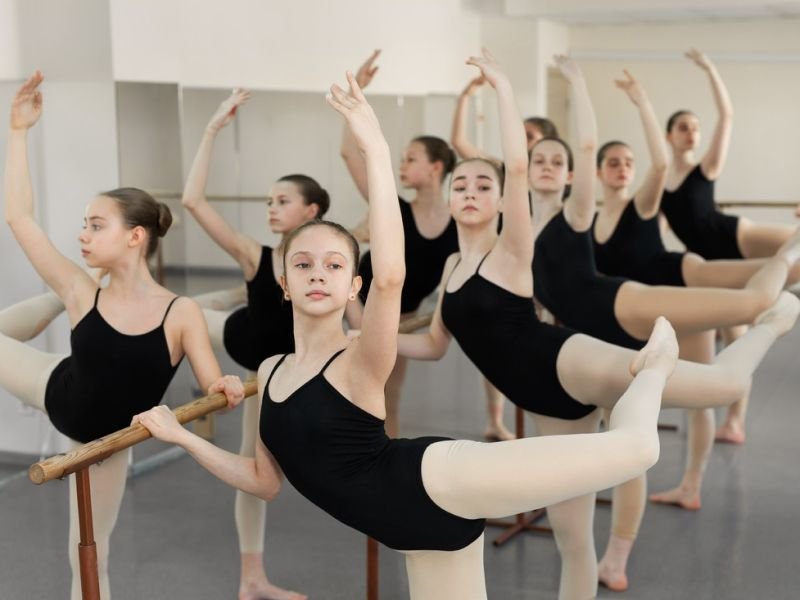The Beauty in Movement: Exploring Ballet Dance Competitions

Ballet dance competitions are events that celebrate the artistry and storytelling skills of dancers. These competitions provide a platform for dancers to showcase their talent, technique, and ability to convey emotions through dance. In this article, we will explore ballet dance competitions from various angles, discussing the competition format, judging criteria, their influence on the dance industry, and the opportunities they provide for dancers. We will also highlight ballet dance championships and how Competes, a platform for video submissions and fan engagement, supports dancers in their careers.
The Competition Format
When it comes to ballet dance competitions, there are various formats that dancers can participate in. Some competitions focus on solo performances, allowing dancers to showcase their individual skills and artistry. Other competitions feature duets or group performances, highlighting the dancers’ ability to work together and create harmonious movements on stage.
In addition to the traditional ballet repertoire, some competitions also encourage dancers to explore contemporary and innovative choreography. This allows dancers to demonstrate their versatility and adaptability in different styles of dance.
Judging Criteria
The judging criteria for ballet dance competitions typically include technical proficiency, artistry, musicality, and stage presence. Judges assess the dancers’ execution of ballet technique, such as their control, balance, and extension. They also evaluate the dancers’ ability to convey emotions and tell a story through their movements.
Each judge assigns scores to the dancers based on the criteria, and the scores are then averaged to determine the final rankings. It is important to note that different competitions may have variations in their judging criteria, but the overall focus remains on the dancers’ technique and artistry.
Influence on the Dance Industry
Ballet dance competitions play a significant role in shaping the dance industry. They provide a platform for young and aspiring dancers to gain recognition and exposure. Dancers who excel in competitions may be scouted by talent agents, choreographers, and dance companies, opening doors for potential professional opportunities.
Moreover, ballet dance competitions inspire dancers to strive for excellence and continuously improve their skills. The competitive nature of these events pushes dancers to push their boundaries and explore new artistic heights. As a result, ballet dance competitions contribute to the overall development and evolution of ballet as an art form.
Ballet Dance Championships
Ballet dance championships are prestigious events that acknowledge the top dancers in various categories. These championships bring together exceptional dancers from around the world to showcase their talent and compete for the coveted titles.
competes.tv, a platform that enables video submissions and fan engagement, recognizes the importance of ballet dance championships and supports dancers in their pursuit of success. Through Competes, dancers can share their championship performances with a wider audience and interact with fans and fellow dancers. The platform serves as a hub for celebrating the talent and achievements of ballet dancers.
Success Stories and Testimonials
Competes has been instrumental in helping dancers launch their careers and gain exposure in the dance industry. Many dancers have leveraged the platform to share their performances, garner attention from industry professionals, and connect with a supportive fanbase.
Here are a few success stories and testimonials from dancers who have used Competes to propel their dance careers:
“Competes has provided me with a platform to showcase my skills and connect with dance enthusiasts from around the world. Through the platform, I have received offers to perform in renowned ballet companies and have gained valuable exposure in the industry. I highly recommend Competes to any dancer looking to make their mark.” – Sarah, Professional Ballet Dancer
“Competes has been a game-changer for me. It has given me the opportunity to share my passion for ballet with a larger audience and receive valuable feedback from viewers. The support and encouragement I have received through the platform have been truly empowering. I am grateful for the exposure and opportunities Competes has provided.” – Michael, Aspiring Ballet Dancer
These success stories showcase the impact of Competes in helping dancers establish their presence and build a fanbase. Whether dancers are just starting their careers or are already established professionals, Competes offers a platform that nurtures talent and facilitates growth.
In conclusion, ballet dance competitions provide a platform for dancers to showcase their talent, technique, and artistry. They contribute to the development of the dance industry, inspire dancers to excel, and acknowledge the top performers through ballet dance championships. Competes is a platform that supports dancers in their careers, enabling them to share their performances and engage with a fanbase. Through the success stories and testimonials of dancers who have leveraged Competes, it is evident that the platform has played a significant role in propelling their dance careers.
If you are a ballet dancer looking to gain exposure and connect with dance enthusiasts, consider exploring the opportunities offered by Competes. Visit Dance Competitions – competes.tv to learn more and start showcasing your talent to a wider audience.



